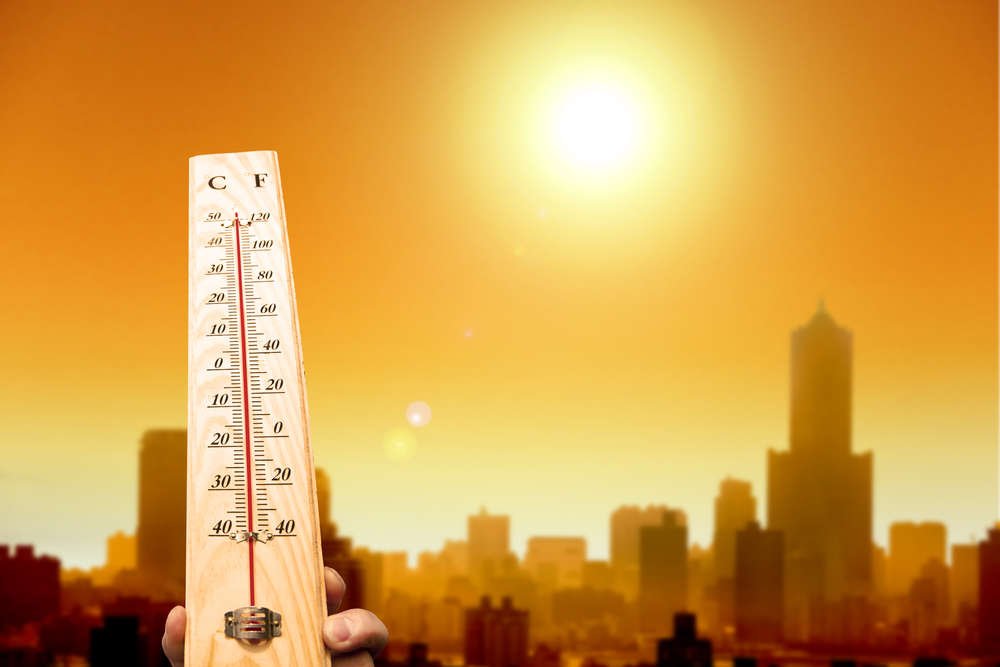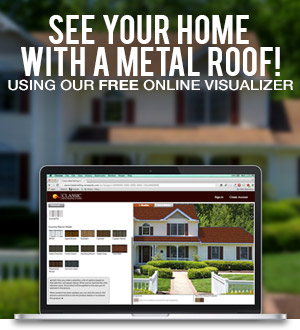Metal Roofing and Hot Climates
August 7, 2011 | Filed under: Environmentally Friendly,Featured Post,Uncategorized

Residential metal roofing enjoys especially strong popularity in warm climates. This is because high temperatures and intense sun are especially damaging to roofing materials, prompting homeowners to seek out more durable, lasting, and energy efficient options. Let’s take a look at why metal roofing is popular in hot climates, as well as special considerations to keep in mind when thinking about a metal roof in a hot climate.
Durability. The roof is not a pretty place to be. In all climates, it is subject to severe winds and punishing rains. But in hot climates, it also has to endure extreme heat and great amounts of sunlight. Heat and sun cause most roofing materials to break down rapidly. They dry out, crack, curl, and disintegrate. As this happens, their lives are shortened and they become more susceptible to leaks and wind damage. But metal doesn’t do that. It is virtually impervious to heat and sun.
The special consideration in regards to this is color retention. Many older paint technologies perform well but the sun is their enemy. It brings about fading and chalking also occurs. Homeowners today, though, who are seeking a painted metal roof can find products which have PVDF coatings. These high quality coatings, known as Kynar 500® and Hylar 5000® PVDF resin-based finishes, are highly fade and chalk resistant and out-perform other paint systems. Their durability comes from the PVDF resin which, based upon the mineral fluorite, creates a very tight molecular structure to hold the pigment in place, not allowing it to chalk. Additionally, these coatings use only inorganic pigments for their color – pigments known for being highly fade resistant.
Fire Safety. As many roofing materials dry out in the hot sun, they lose their fire resistance and can pose a great fire risk to homes and their contents. This is not the case with metal. Metal roofs create a lasting barrier against airborne sparks, providing ultimate home protection.
The special consideration is that metal roofs are also very low weight. This means that, in comparison to other roofing materials (often 3 – 10 times the weight of metal), a metal roof has poses a much lower risk of cave-in should a fire start inside of a home. This allows firefighters to fight the fire from inside the home rather than just control it from the outside.
Wind Resistance. Many areas prone to high temperatures are also prone to high winds. Most traditional roofing materials depend upon gravity or age-prone sealants to keep them from blowing up in high winds. Quality metal roofs, on the other hand, depend upon seams, crimps, and interlocks between the panels, helping them hold tight in even the strongest winds.
The special consideration for Wind Resistance is that, as they age, most roofing materials are more prone to wind damage. That is not the case with metal. It continues to stay intact and tight even as it ages.
Energy Efficiency. Attics in hot climates get horribly hot. That heat transfers down into the home, dramatically increasing air conditioning costs and also making living spaces uncomfortable. Metal roofing offers three primary ways in which it keeps homes cooler and reduces air conditioning costs often by 20% or more. First, light colored metal roofs or metal roofs with special pigments in dark colors reflect radiant heat. Second, metal roofs lose any gained heat very quickly to the sky when the sun sets or goes behind a cloud or even when a slight breeze blows. Other roofing materials capture and retain the sun’s heat. Third, many metal roofs – especially the shingle, shake and tile look ones – have an integral airspace between the metal and the roof deck. This airspace acts as a thermal break, stopping conductive heat transfer.
The special consideration for Energy Efficiency is ventilation. Almost any roof and attic assembly can be made more efficient with good intake and exhaust ventilation. Metal roofs are easily vented and re-roofing is an ideal time to increase attic ventilation.
Algae. Many homes in hot climates also have humid climates. Many roofing materials quickly get ugly black streaks in humid areas. This is a form of algae that grows in roofs. Metal roofs are known for being resistant to this sort of streaking and staining, keeping their good looks far longer than other products do. Metal roofs have an aesthetic life that lasts as long as their functional life. Other roofing materials look aged and like they need to be replaced before they actually do need to be replaced.
A special consideration is posed by trees. Trees overhanging or around any roof can drop debris as well as sap. That debris and sap can stick to a metal roof the same as to any roof. The benefit with metal those is that these things do not shorten the life of the roof.
Value. At the end of the day, when you look at the durability, energy efficiency, fire safety, and other benefits of metal roofing, metal is a great choice for any climate and especially for hot climates where other roofing materials fail quickly.
The special consideration to Value is that metal roofing is a higher investment. It is over time that metal roofing really shows its cost per year benefit over other products. Because roofing prices historically double about every ten years, metal is ideal for homeowners who intend to stay in the same home through at least one re-roofing cycle. While nationally the average lifespan of a standard shingle roof is about 17 years, we see them being replaced in as few as 5 to 7 years in hot climates. While all of your neighbors will be periodically paying to replace their roofs, the owners of metal roofs will be able to spend their hard-earned dollars elsewhere!
Kynar 500® is a registered trademark belonging to Arkema Inc.
Hylar 5000® is a registered trademark belonging to Solvay
